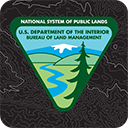Arizona’s Fairbank Ghost Town
Fairbank is a “ghost town” located within the San Pedro Riparian National Conservation Area, along the San Pedro River in southeast Arizona. Its life as a town began with the construction of a railroad in 1881. Soon it became an important depot as the closest railroad stop to Tombstone, then one of the largest western cities (15,000 people in 1882). In its heyday, Fairbank supported restaurants, saloons, a telegraph station, and a hotel. Several buildings remain today, including the schoolhouse and the recently restored Mercantile Building.
Called Junction City, then Kendall, then Fairbanks, the town was officially named Fairbank on May 16, 1883. The name refers to N.K. Fairbank of Chicago, who helped finance the first railroad. The town was built on an old Mexican land grant, the San Juan de las Boquillas y Nogales, which was bought by the Boquillas Land and Cattle Company in 1901. The company evicted all potential landowners but continued to lease the Mercantile Building and a few residences well into the 1970s.
The Mercantile was the commercial center of Fairbank, a former railroad hub for transporting ore from Tombstone mines to be processed in stamp mills along the San Pedro River. At one time, four different railroad lines connected Fairbank to the Southern Pacific main line in Benson, and as far away as Guaymas, Mexico.
The Fairbank Schoolhouse has been restored to include a classroom, as well as multiple exhibits on the history and prehistory of the area. The original wood frame Schoolhouse burned down in 1917; the existing structure was built of gypsum block in 1920.
The current townsite includes a visitor parking lot, and self-guiding interpretive trails and signage. In addition to the Mercantile Building and schoolhouse, visitors can see several historic wood frame structures, including a residence, garage, chicken coop, and privy. Short walks lead to the San Pedro River and Fairbank Cemetery, and longer trails continue through the national conservation area.
The BLM manages the site with valuable assistance from the Friends of the San Pedro River (FSPR). The FSPR, founded in 1987, is a volunteer, non-profit organization dedicated to the conservation and restoration of the river and natural and cultural resources of the San Pedro Riparian National Conservation Area through advocacy, education, and interpretation. More information can be found at http://sanpedroriver.org/wpfspr/.
Before you go, remember:
- Help keep your public lands clean — always practice the seven Leave No Trace principles and pack out your trash.
- Services may be limited. Bring your own supplies such as trash bags, disinfecting wipes, hand sanitizer, and toilet paper.
- It is illegal to remove any historic artifacts from public lands. Please leave everything in its place.
- Have a safe visit. Know before you go: https://www.blm.gov/programs/recreation/know-before-you-go
- More about visiting San Pedro Riparian National Conservation Area: https://www.blm.gov/national-conservation-lands/arizona/san-pedro
- If you have questions about visiting, contact the Tucson Field Office at 520–258–7200
